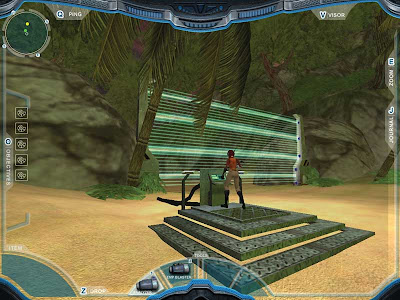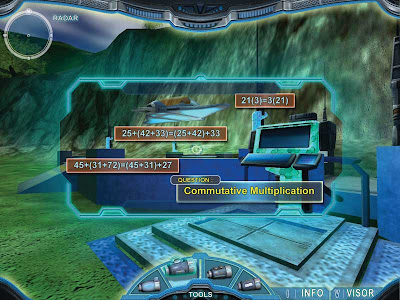|
1. Foreword
In August, 2008 US news website Courant featured a report titled “Video Games Learning Tools?” (Note 1) that pointed out that some researchers have found that student learning effectiveness can be improved by using games and one research project found that surgeons who played surgery games saw an improvement in their surgical skills. Another report was made by Reuters Tokyo on June 27th (note 2). A teacher at Tokyo’s Joshi Gakuen high school, Motoko Okubo, used NDSL English learning software and textbooks to teach students phonetics and listening comprehension. These two examples show that game learning is effective and countries around the world students are now learning by playing games.
![[NDSL+for+Learning.jpg]](http://newsletter.teldap.tw/file/file/31/3155.jpg)
Fig 1 Using NDSL to learn. Data source: Reuters Tokyo.
2. Game Learning Characteristics
At present most game teaching materials are not simply a knowledge conveying tool; most are used for blended learning, allowing learners to use the knowledge they have learned in the game situation instead of just answering practice questions. The response after completing the questions they hear would always be “Congratulations on completing all the practice questions. You scored 66 points. It is recommended that you go through Chapter 2 again (they probably already went through it many times). Always hearing the same response would be very tiresome for the learner and they would also not know where they went wrong. It will reduce their motivation to learn conscientiously. Game teaching material is highly interactive, allowing the learner to self-learn and know where they went wrong and where they went astray.
3. Examples of game learning in Taiwan and overseas
Today, many companies and groups are involved in producing game teaching material. Below some game teaching material from Taiwan and overseas are introduced.
In Taiwan:
1.InterServ International Inc.—Games School
Games School (http://www.uc520.com.tw/) is Taiwan’s first teaching website aimed at developing children’s multi-dimension intelligence. It provides various learning services, including on-line game and learning measuring mechanism. The target learners are primary school students. The teaching material was produced using Flash and Shockwave.

Fig 2: Ah Niu throwing fun. Learning the relationship between decimals and fractions and how to convert them. Data source: Games School.
2.Education Learning House—RF Math
The new-generation teaching system platform (FlashHand) and interactive learning machine (remote control) developed using wireless RF. The Department of Information Management of Chaoyang University, Technology and Education Learning House integrates math contents in primary school into learning remote control, allowing students to play learning game using just a remote control. It’s highly interactive and increasing student learning motivation.

Fig 3—RF math. Quickly press the numbers button on the remote control to remove the problem bubble on the screen. Data source: Education Learning House.
Overseas:
1.Edheads
Edheads (http://www.edheads.org/) is a highly interactive on-line learning website, the teaching material of which was produced using Flash. It is not one-way teaching but stresses interaction with the user to allow him/her to acquire life knowledge that isn’t easy to learn, as the meaning of name suggests: “Educate your head.” To achieve this, the website has created many simulation materials. Edheads at present offers the following types of teaching material:
I. Dealing with a car accident: Learners play the role of a police officer dealing with a car crash, learning how to gather evidence, acquire information from witnesses and reach conclusions.

Fig 4: Dealing with a car accident. Data source: Edhead.
II. Surgery: Learners play the role of a surgeon using surgical instruments to operate on a patient.

Fig 5: Surgery Data source: Edhead
III. Machine structure: The learner has to find the suspicious object in the room and say how it is used and what mechanism it uses.

Fig 6: Machine structure. Data source: Edhead.
IV. Weather report: The learner learns how the TV weather forecaster reports and forecast the weather.

Fig7: Weather Report. Data source: Edhead.
2. DimensionM
DimensionM (http://www.dimensionm.com/) is a 3D learning platform. Math problems are merged into the game. The learners play a role having adventures on a desert island and use their math knowledge to solve the problems. It is targeted at junior and senior high school students and supports multiple connections.


Fig. 8: DimensionM game screen. Data source: DimensionM.
3. Sun Microsystems’ new employee game learning teaching material
Sun Microsystems released two games on its website (http://learning.sun.com/sls/staff/display/NEWHIRE/Play) in October 2007—Dawn of the Shadow Specters and Rise of the Shadow Specters, encouraging new employees to play the games before starting work at the company. Learners play a “Rockman”-like role and have various adventures in the Flash game. They are intended to give new employees an understanding of the company and allow them to get acquainted with its corporate culture in the comfort of their own home.

Fig. 9:Rise of the Shadow Specters game screen. Data source: Sun Microsystems.
4. Discussion and Conclusion
Below is a simple comparison table for the games mentioned above:
|
Compared
Item |
Games school |
RF math |
Edheads |
DimensionM |
Sun Microsyst. |
|
Target |
Primary school, Kindergar
-ten |
Primary school |
Designated persons |
Junior high, Senior high school |
New employees |
|
Cost |
Yes |
Yes |
Free |
Yes |
Free |
|
Subjects |
Chinese, English,
Math |
Math |
Car accident, surgery, weather, mechanisms |
Math |
Job content |
|
Play Method |
Click to select, drag |
Compete to be first to answer |
Role play |
Role play |
Role play |
|
Developing Tool |
Flash |
Wireless RF |
Flash |
Website does not say. Probably C language |
Flash |
Most game teaching materials in Taiwan are for after school learning, with traditional practice questions made into game teaching material. The contents teach only a small concept, unlike foreign game teaching materials that are directed at a special subject. The targets of game learning in Taiwan are all primary school students and no game type teaching material has been developed that is directed at a designated group of people like Sun Microsystem’s (new employees in its case) or used for specialized learning as in the case of the Edhead website. Perhaps the reason for this is the high cost in terms of time and money of developing learning game, requiring time to work out how to add learning elements to the game and spending money on developing the game. Time and money are exactly what companies in Taiwan do not have in abundance.
The game learning concept has been discussed by scholars for a long while. In Taiwan and overseas companies or groups have merged the special features of games into learning to attract students and improve learning effectiveness. As technology continues to progress, it can be believed that, in the future, many more highly-interactive game learning teaching materials will be developed allowing learners to learn happily in a painless learning environment.
Note 1:
http://www.courant.com/news/nationworld/hc-games0818.artaug18,0,5225883.story
Note 2:
http://www.reuters.com/article/technologyNews/idUSS2714298420080627?virtualBrandChannel=10216&sp=true
Note 3: Prensky, M. (2007). Digital Game-Based Learning. New York: McGraw-Hill.
|